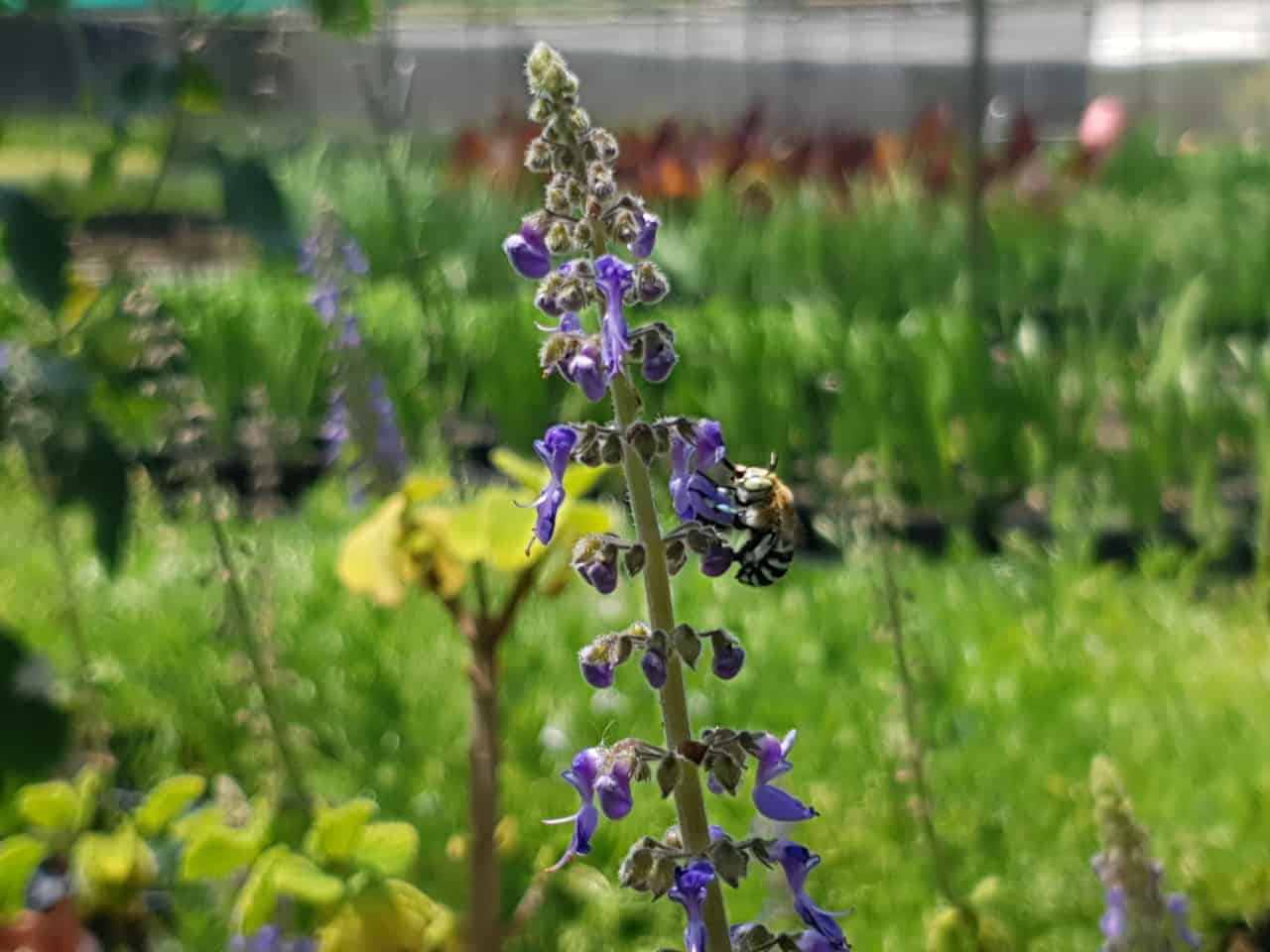
Native Blue Banded Bee on Plectranthus graveolens Bush Basil – ©Tucker Bush
Have you heard the buzz? Earlier this year, bees were declared the most important species on this planet. We rely on them to pollinate food crops, feed crops and the multitude of vital and beautiful flora in our delicate ecosystem. According to native bee expert and author of Bee Hotels for Australian Bees, Kit “The Bee Babette” Prendergast, there are approximately 2,000 species of native bee in Australia — many of which have co-evolved with our native flora. Although some of them are generalists and will forage on some exotic flowers, many of them are specialised to forage on just a narrow range of native plants like eucalypts, melaleucas, bottlebrushes and native legumes. These are plant species that are vital for our buzzing specialists.
“Honeybees are an introduced species, and are not endangered here at all,” Kit tells us. “The thriving honeybee colonies in Australia may even be harming our native bees through competition. Honeybees are super-generalists and will forage on a wide range of plants. Many ‘bee friendly’ or ‘plant these for bees’ info on the web is actually inappropriate for supporting Australia’s native bees.”
However, you’ve got all the bees looked after, when you plant native flowers. 10th–17th Nov is Australian Pollinator Week, celebrating our apian friends and other incredible, important species. It’s the perfect season for planting, and an excellent time of year to add pollinator-attracting plants to your native edible garden. Here’s what we recommend.
Sea Purslane
Sesuvium portulacastrum 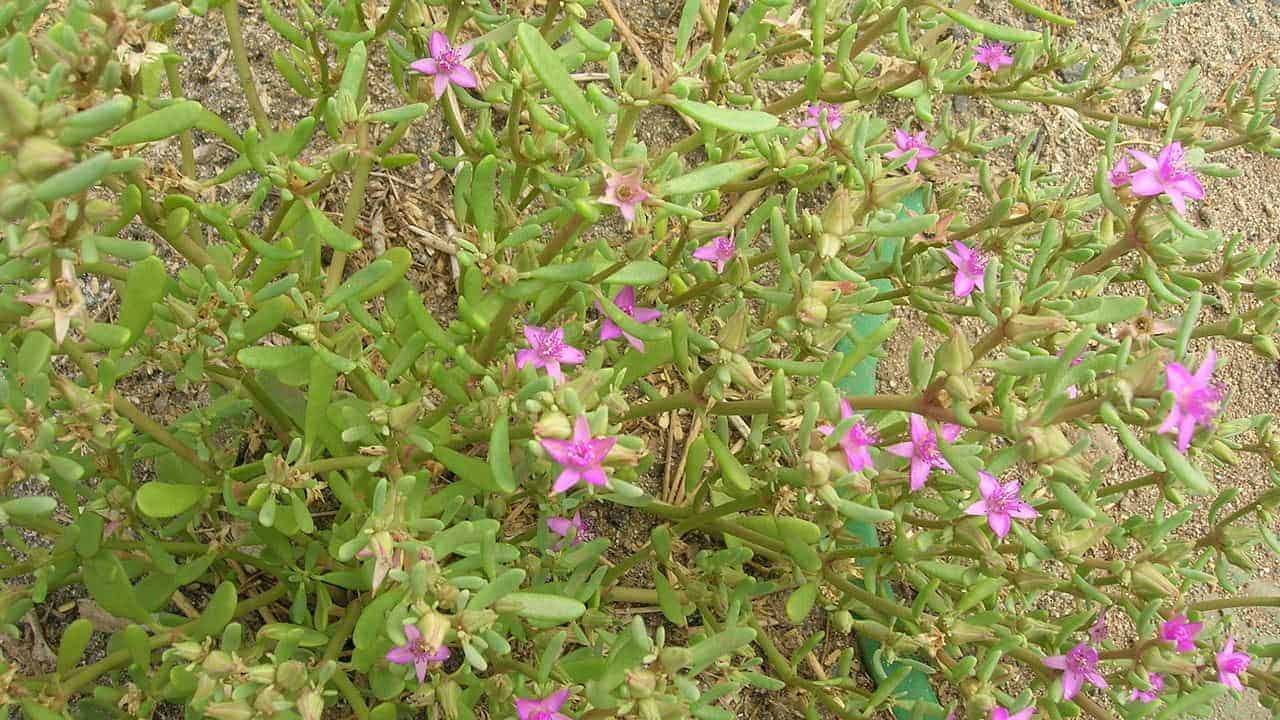 Put this tasty weed to work in sandy garden beds and ornamental rockeries. Native to coastal regions and salt marshes, this Sea Purslane doesn’t need much to keep growing — just let it seed and scatter where it may. The tiny pink flowers will attract a variety of tiny pollinator insects (and possibly even lizards) throughout the growing season.
Put this tasty weed to work in sandy garden beds and ornamental rockeries. Native to coastal regions and salt marshes, this Sea Purslane doesn’t need much to keep growing — just let it seed and scatter where it may. The tiny pink flowers will attract a variety of tiny pollinator insects (and possibly even lizards) throughout the growing season.
- Learn more about Sea Purslane
Bush Basil
Plectranthus graveolens 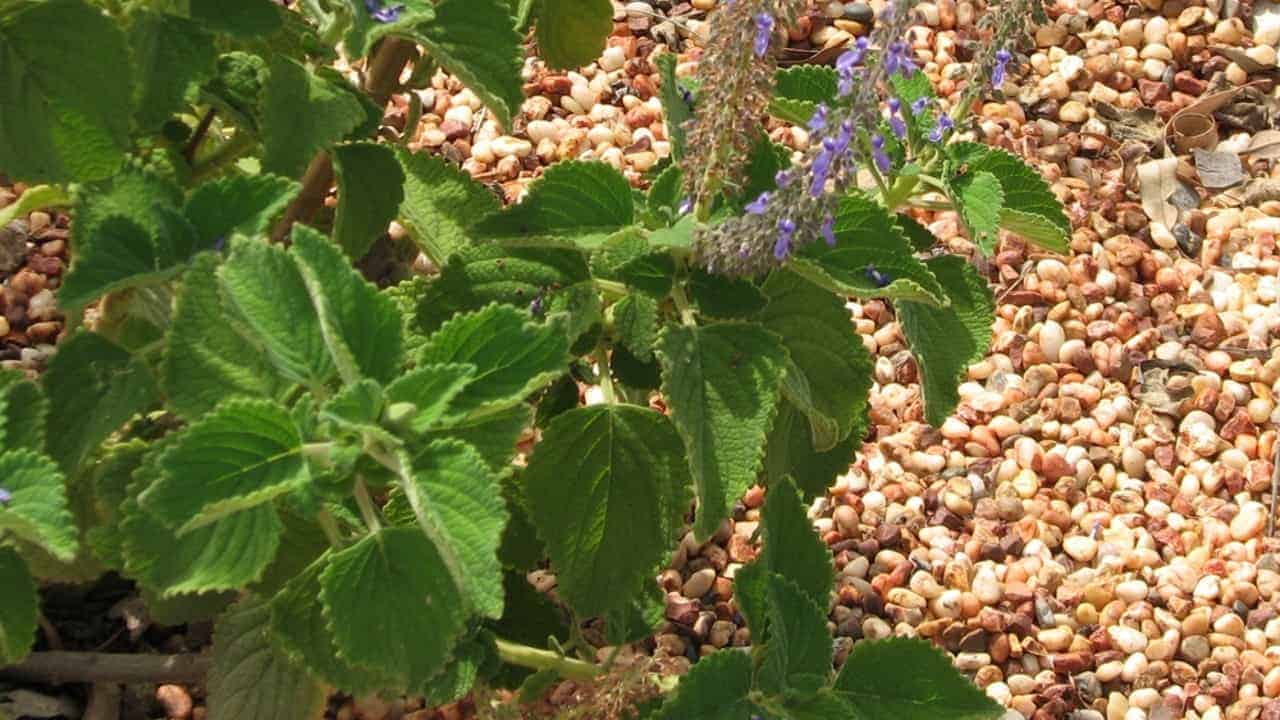 Early European settlers called Bush Basil the “Five Spice Plant” for its complex herby aroma, a great match for Mediterranean flavours. This sun-loving herb will tolerate a sandy soil, but yields bigger and better harvests if grown in a loamy potting mix with plenty of organic matter. This species bears broad, fuzzy leaves throughout the year, with slender clusters of tiny purple/blue flowers during warmer months.
Early European settlers called Bush Basil the “Five Spice Plant” for its complex herby aroma, a great match for Mediterranean flavours. This sun-loving herb will tolerate a sandy soil, but yields bigger and better harvests if grown in a loamy potting mix with plenty of organic matter. This species bears broad, fuzzy leaves throughout the year, with slender clusters of tiny purple/blue flowers during warmer months.
- Learn more about Bush Basil
Bush Mint
Mentha satureioides 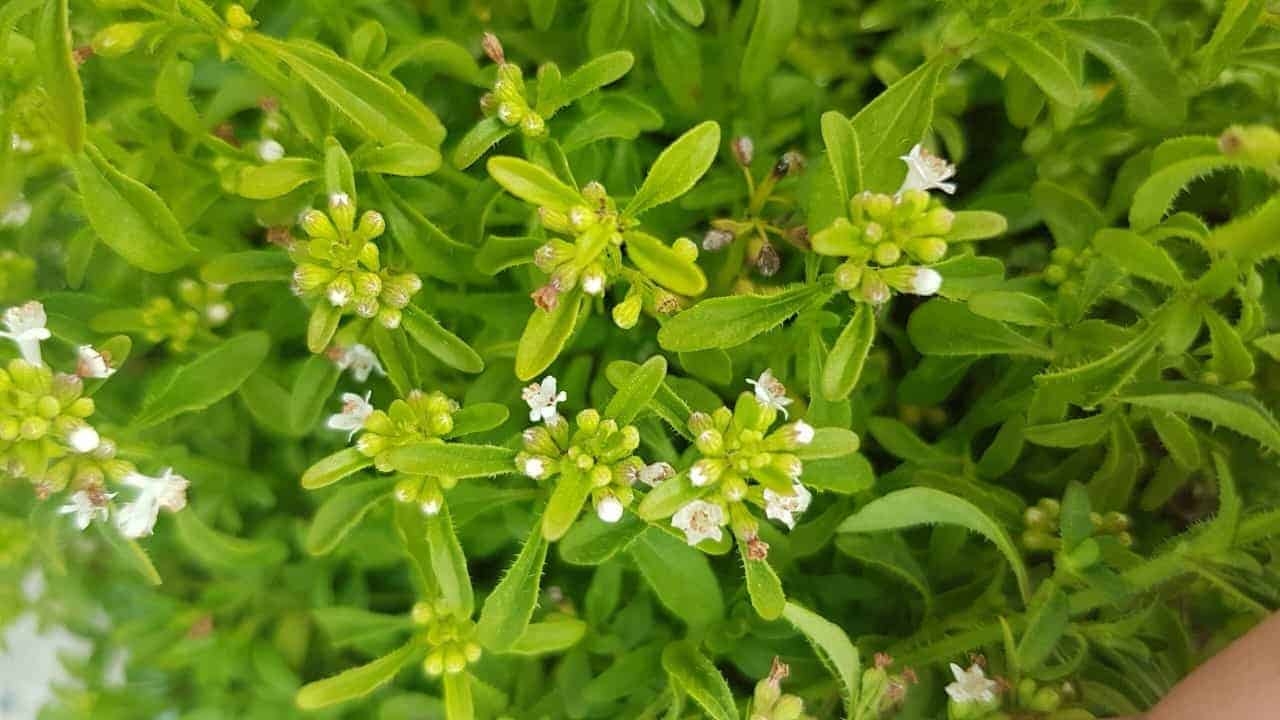 Also sometimes called Native Pennyroyal, Bush Mint is smaller and more delicate than other native mints, but has a similar aroma and may be used in place of exotic species. Try it in a salad, sauce, sorbet or fresh-leaf tisane. Tiny white flowers will attract bees and other pollinators over Summer, assuming you’ve resisted harvesting during cooler times of year.
Also sometimes called Native Pennyroyal, Bush Mint is smaller and more delicate than other native mints, but has a similar aroma and may be used in place of exotic species. Try it in a salad, sauce, sorbet or fresh-leaf tisane. Tiny white flowers will attract bees and other pollinators over Summer, assuming you’ve resisted harvesting during cooler times of year.
- Learn more about Bush Mint
Native Oregano
Prostanthera rotundifolia 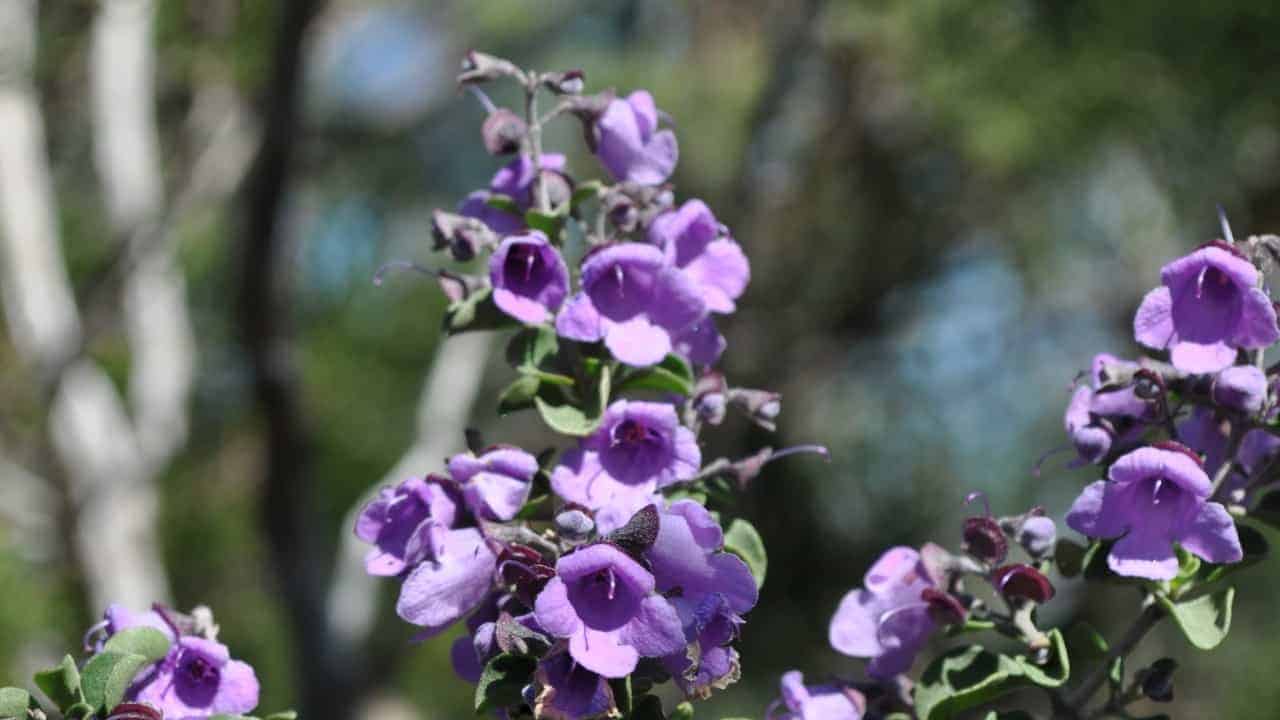 Traditionally, Native Oregano was used for treating headaches and colds. These days, it’s more common as a culinary herb and ornamental bush. Enjoy the attractive dark green foliage of this evergreen shrub year round, with a bonus pink- or purple- flower show through September and October. This fast-growing species is perfect for gaps, edges, narrow beds, and as an edible hedge or screen.
Traditionally, Native Oregano was used for treating headaches and colds. These days, it’s more common as a culinary herb and ornamental bush. Enjoy the attractive dark green foliage of this evergreen shrub year round, with a bonus pink- or purple- flower show through September and October. This fast-growing species is perfect for gaps, edges, narrow beds, and as an edible hedge or screen.
- Learn more about Native Oregano
Sea Celery & Sea Parsley
Apium annuum and Apium prostratum var. prostratum 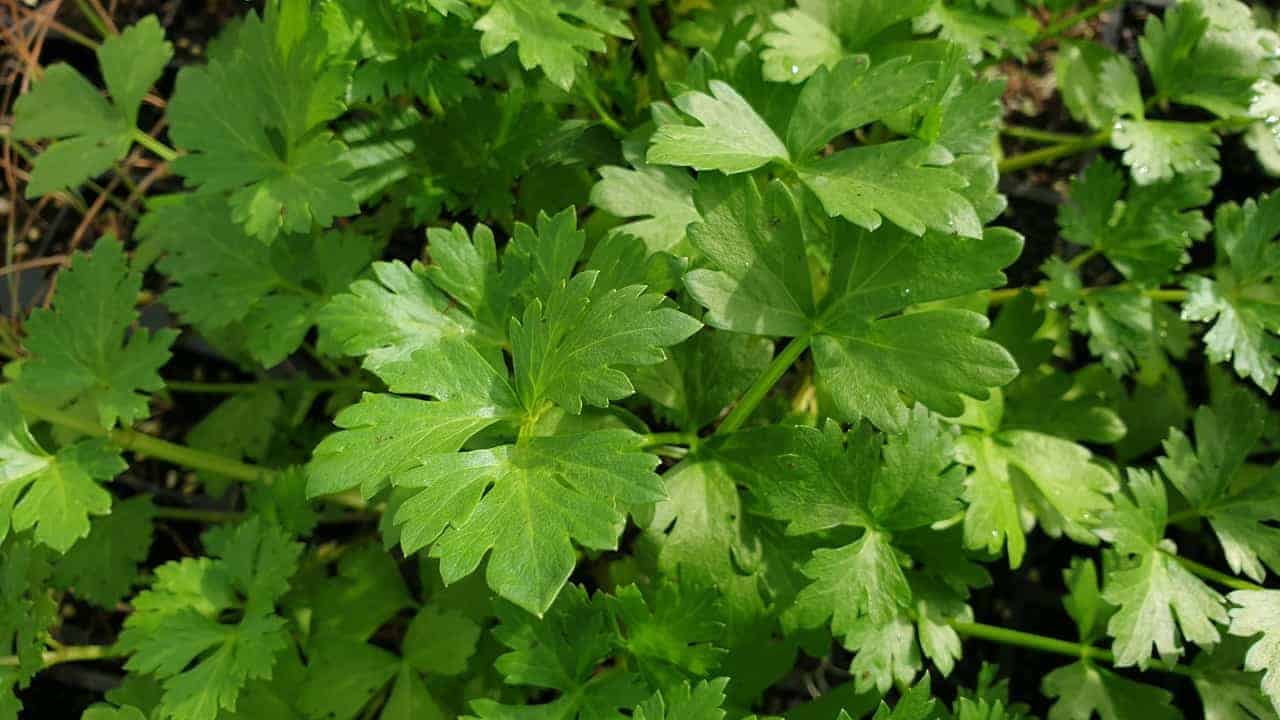 These native sea veggies are a must-have for any Australian edible garden. They present similar culinary qualities to exotic celery and flat-leaf parsley, but with a hint of “ocean” in their flavours. Choose a soil or potting mix that drains easily, and water well throughout the year. Like other Apium species, expect to see clusters of tiny white bee-attracting flowers before the plant goes to seed.
These native sea veggies are a must-have for any Australian edible garden. They present similar culinary qualities to exotic celery and flat-leaf parsley, but with a hint of “ocean” in their flavours. Choose a soil or potting mix that drains easily, and water well throughout the year. Like other Apium species, expect to see clusters of tiny white bee-attracting flowers before the plant goes to seed.
- Learn about Sea Celery and Sea Parsley
Chocolate Lily
Arthropodium strictum  The woodland native Chocolate Lily gets its name from its chocolate scented flowers (surprise!). Its bush food value, however, comes mainly from its juicy tubers, which can be eaten raw or cooked. Tubers are ready for harvest when the plant is in bloom (September — December), producing blue-violet flowers that smell remarkably of chocolate (sometimes with vanilla or caramel notes).
The woodland native Chocolate Lily gets its name from its chocolate scented flowers (surprise!). Its bush food value, however, comes mainly from its juicy tubers, which can be eaten raw or cooked. Tubers are ready for harvest when the plant is in bloom (September — December), producing blue-violet flowers that smell remarkably of chocolate (sometimes with vanilla or caramel notes).
- Learn more about Chocolate Lily
Lemon Myrtle
Backhousia citriodora  Having already earned the title “Queen of the Lemon Herbs”, you wouldn’t think our humble Lemon Myrtle could get any more popular. Well, it can — it’s a very trendy native herb this year, swept up in the renewed vigor of the bushfood movement. With its elegant branches of foliage and fragrant, creamy Autumn flowers, it makes a spectacular pollinator-attracting ornamental in any native garden.
Having already earned the title “Queen of the Lemon Herbs”, you wouldn’t think our humble Lemon Myrtle could get any more popular. Well, it can — it’s a very trendy native herb this year, swept up in the renewed vigor of the bushfood movement. With its elegant branches of foliage and fragrant, creamy Autumn flowers, it makes a spectacular pollinator-attracting ornamental in any native garden.
- Learn more about Lemon Myrtle
Raspberry Jam Wattle
Acacia acuminata 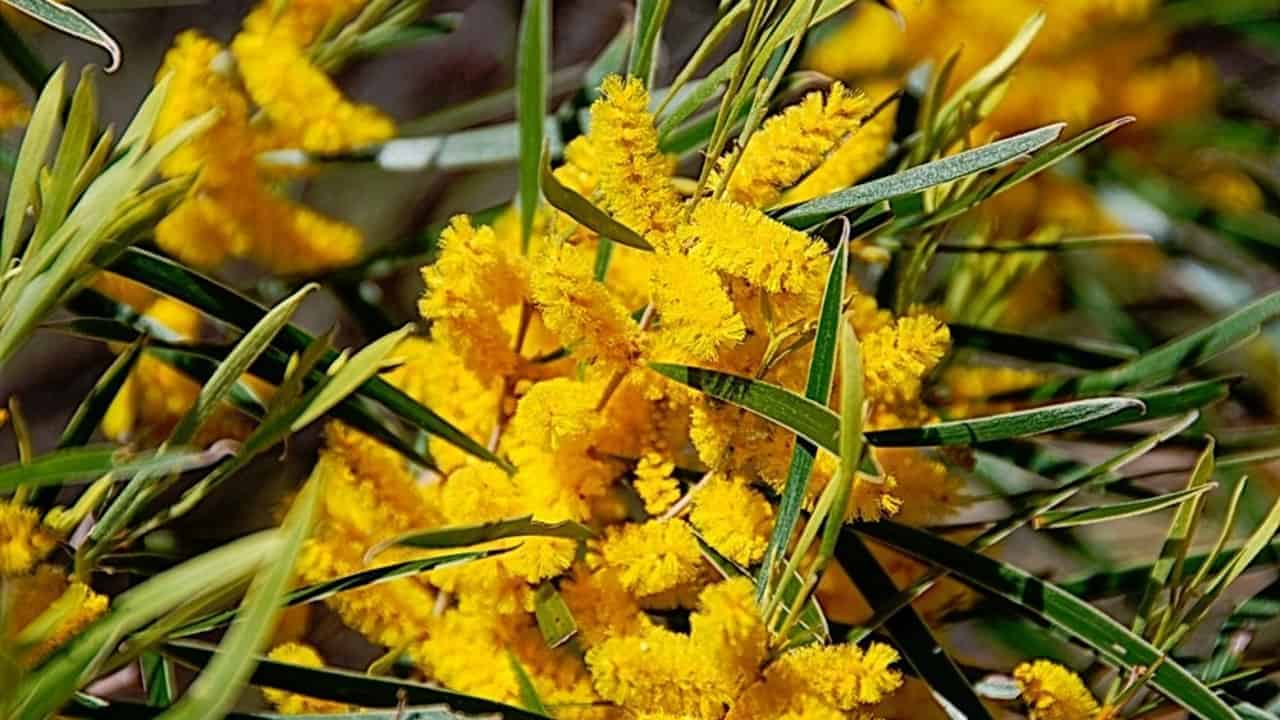 Despite the fruity name, Raspberry Jam Wattle isn’t prized for fruit, but for its seeds, resin and dense wood. It does, however, smell like raspberry jam. This species flowers prolifically in Spring, providing an aromatic display of fuzzy golden rods while attracting bees and native birds. Seed pods follow in the Summer, which can be harvested from the tree or collected off the ground.
Despite the fruity name, Raspberry Jam Wattle isn’t prized for fruit, but for its seeds, resin and dense wood. It does, however, smell like raspberry jam. This species flowers prolifically in Spring, providing an aromatic display of fuzzy golden rods while attracting bees and native birds. Seed pods follow in the Summer, which can be harvested from the tree or collected off the ground.
- Learn more about Raspberry Jam Wattle
Fraser Island Apple
Acronychia imperforata 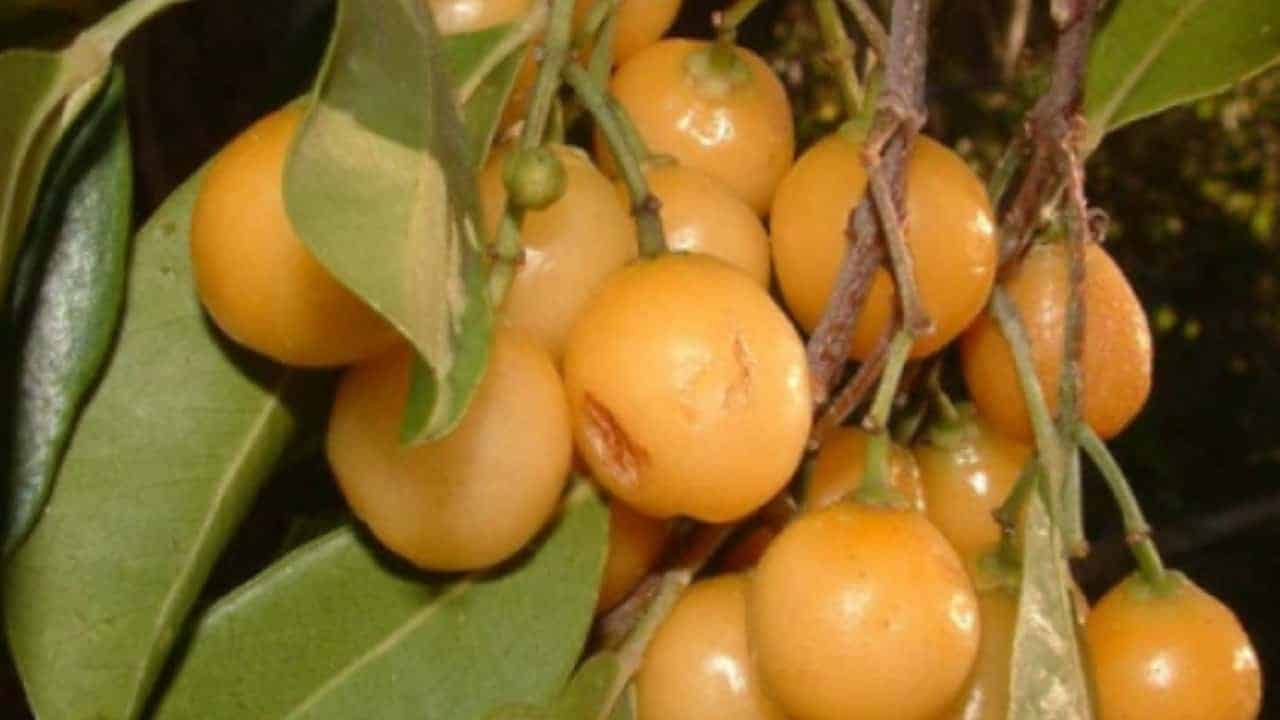 The butterfly-attracting Fraser Island Apple is closer to Lemon Aspen and White Aspen than to actual apples, with bright yellow fruit resembling Lilly Pilly berries in shape and size. They’re sweet and tart, and much loved by birds, so be sure to harvest them early and often! This subtropical tree loves warm weather and easily draining soils, but keep the ground well mulched and moist during warmer months.
The butterfly-attracting Fraser Island Apple is closer to Lemon Aspen and White Aspen than to actual apples, with bright yellow fruit resembling Lilly Pilly berries in shape and size. They’re sweet and tart, and much loved by birds, so be sure to harvest them early and often! This subtropical tree loves warm weather and easily draining soils, but keep the ground well mulched and moist during warmer months.
- Learn more about Fraser Island Apple
Tucker Bush Cherry
Syzygium australe 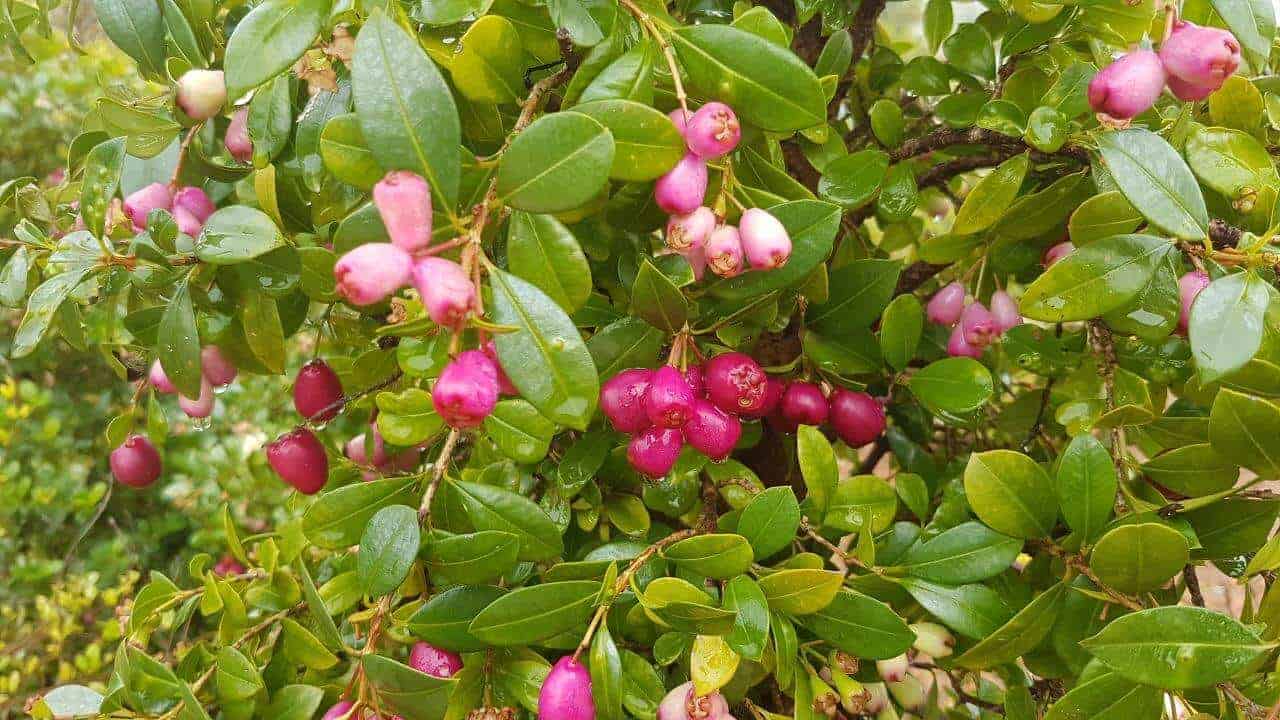 Because of its resistance to psyllids (a sap-sucking garden pest), Tucker Bush Cherry is an ideal Lilly Pilly variety for home gardeners. From late Spring onwards, the branches burst with clusters of white fluffy flowers. This plant isn’t just a pollinator magnet, but once it starts fruiting, you might see birds or other wildlife invite themselves over as well.
Because of its resistance to psyllids (a sap-sucking garden pest), Tucker Bush Cherry is an ideal Lilly Pilly variety for home gardeners. From late Spring onwards, the branches burst with clusters of white fluffy flowers. This plant isn’t just a pollinator magnet, but once it starts fruiting, you might see birds or other wildlife invite themselves over as well.
- Learn more about Tucker Bush Cherry
